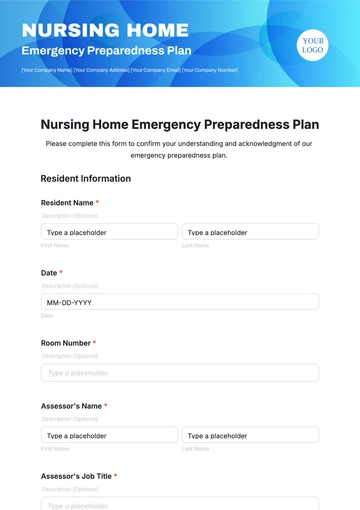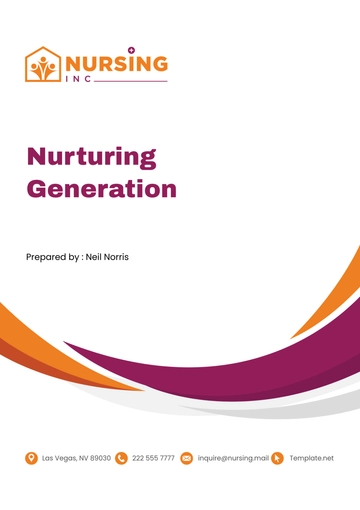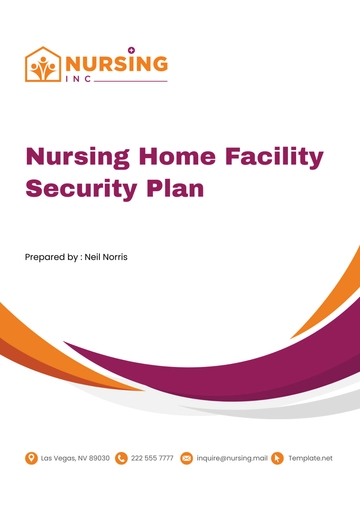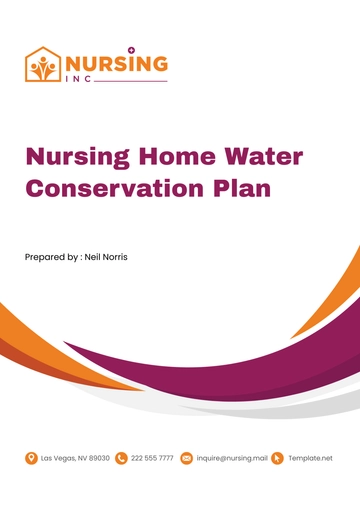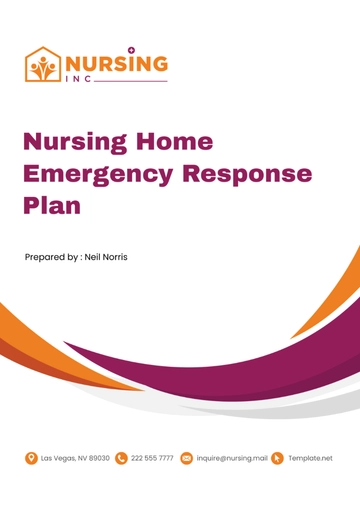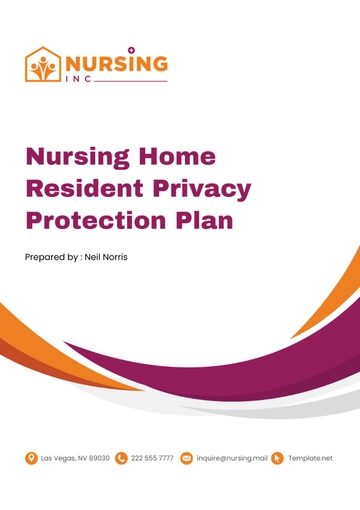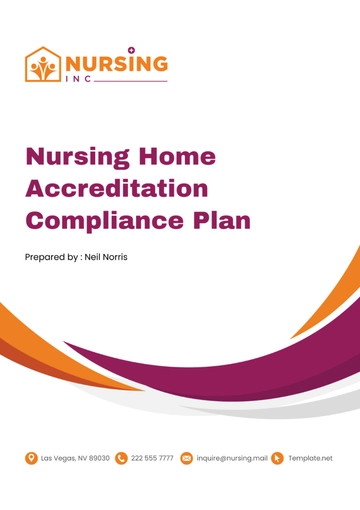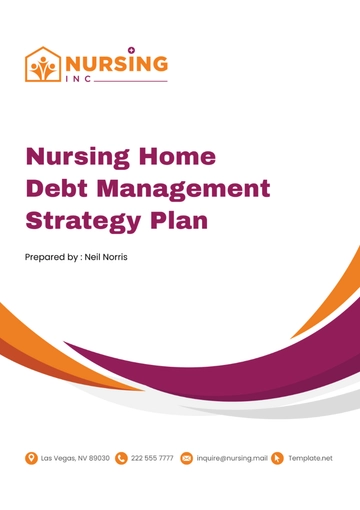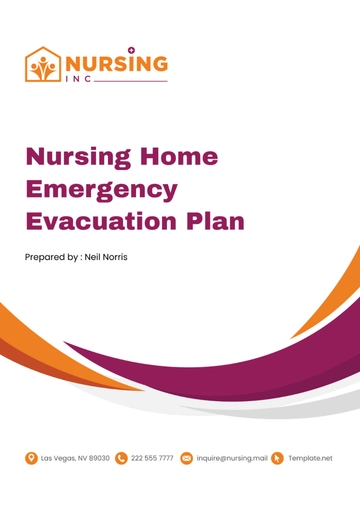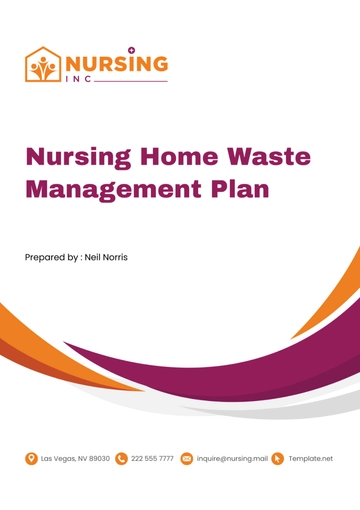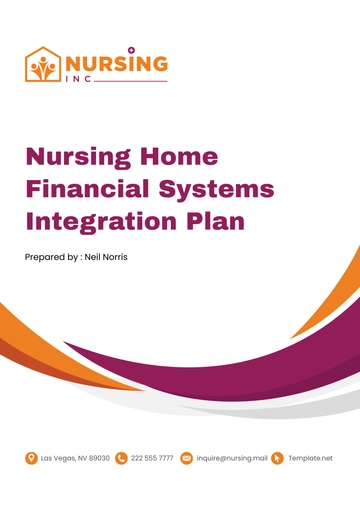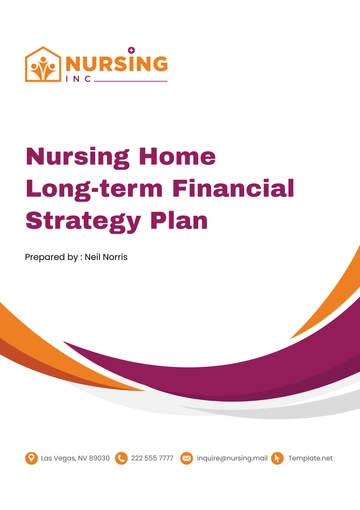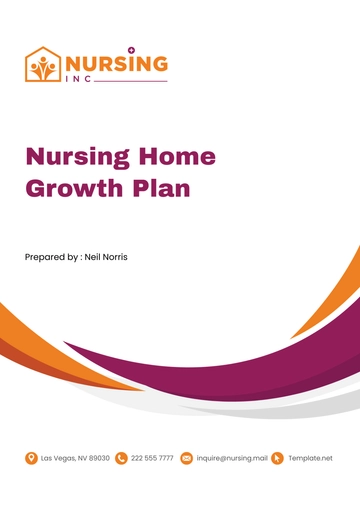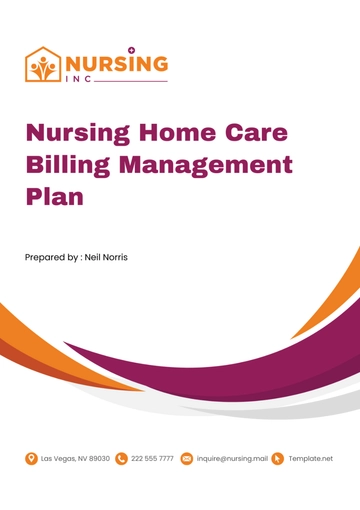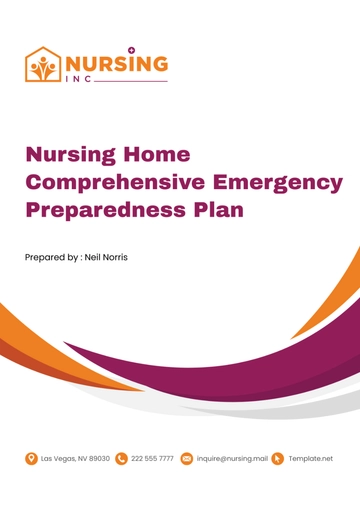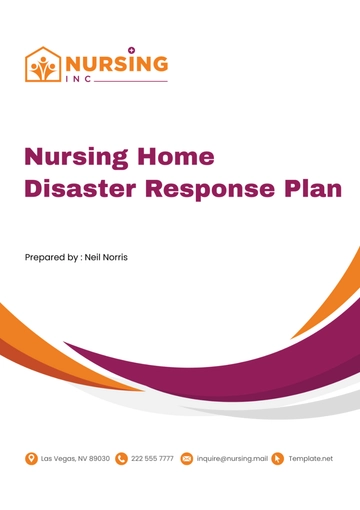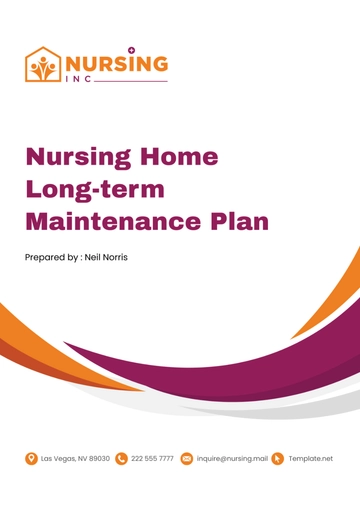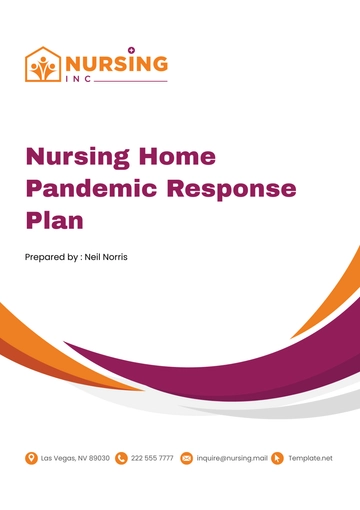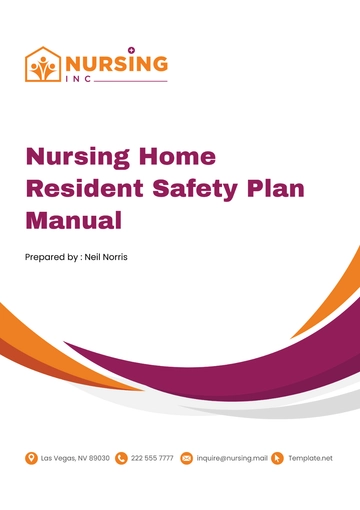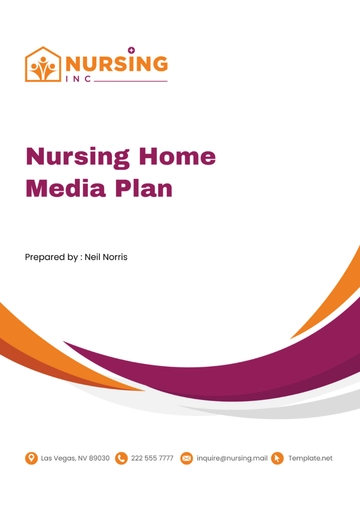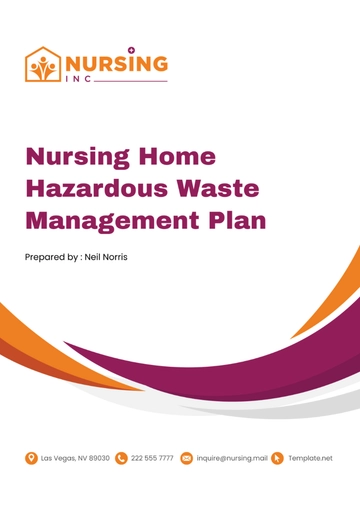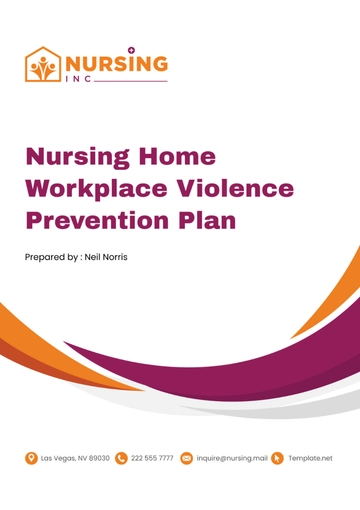Free Nursing Home Resident Safety Plan
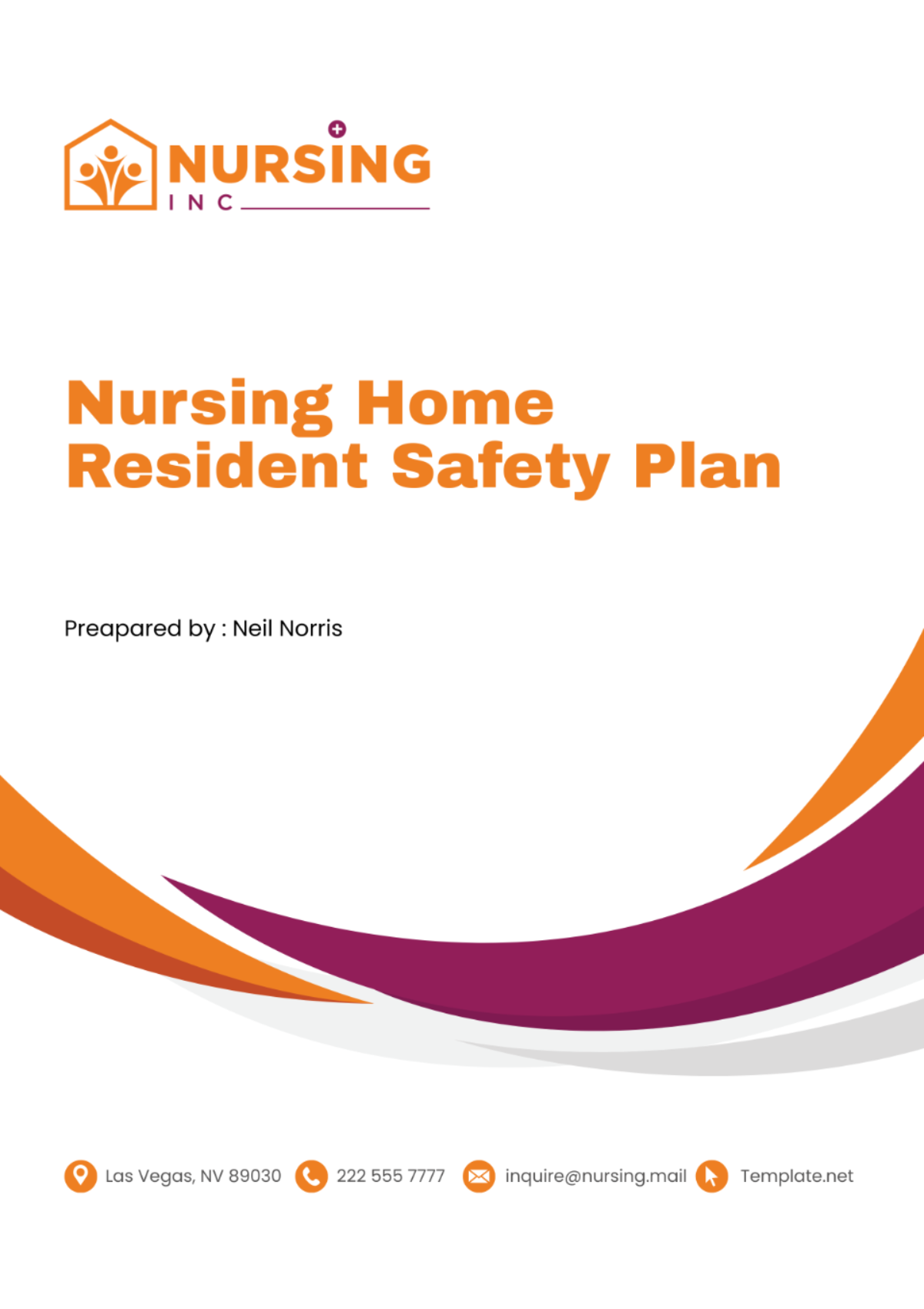
I. Introduction
At [Your Company Name], the safety and well-being of our residents are paramount. We are committed to providing a secure and supportive environment where residents can thrive with dignity and independence. This Resident Safety Plan outlines our comprehensive approach to maintaining a safe living environment and preventing accidents, injuries, and other adverse events.
II. Fall Prevention
Assessment and Monitoring: Upon admission and regularly thereafter, residents will undergo comprehensive fall risk assessments. These assessments will include evaluations of mobility, balance, strength, and cognition. Residents identified as at risk for falls will have individualized care plans developed to mitigate these risks.
Environmental Modifications: Our facility will feature non-slip flooring, handrails in hallways and bathrooms, adequate lighting, and clear pathways to minimize fall hazards. Furniture arrangements will be optimized for resident safety, and we will provide mobility aids as needed.
Staff Training: All staff members will receive training in fall prevention strategies, including proper transfer techniques, assistance with mobility, and monitoring for signs of instability or dizziness. Regular in-service education sessions will reinforce these skills.
Exercise and Rehabilitation Programs: We will offer structured exercise programs tailored to improve strength, balance, and coordination among residents. Physical and occupational therapy services will be available to residents who require specialized rehabilitation interventions.
III. Medication Management
Medication Administration Protocols: Trained medication aides will be responsible for administering medications to residents according to physician orders. Each resident's medication regimen will be carefully documented and regularly reviewed for accuracy and appropriateness.
Medication Safety Checks: Our facility will utilize technology such as barcode scanning and electronic medication administration records (eMAR) to minimize the risk of medication errors. Double checks will be conducted for high-risk medications, and any discrepancies will be promptly addressed.
Education for Residents and Families: Residents and their families will receive education on medication safety, including the importance of adhering to prescribed regimens, recognizing potential side effects, and storing medications securely. Pharmacist consultations will be available upon request.
Adverse Event Reporting: Staff members will be trained to recognize and report adverse drug reactions or medication errors promptly. Incident reports will be thoroughly investigated, and corrective actions will be implemented to prevent similar incidents in the future.
IV. Infection Control
Hand Hygiene Practices: All staff members will adhere to strict hand hygiene protocols, including regular handwashing with soap and water or using alcohol-based hand sanitizers. Hand hygiene stations will be readily accessible throughout the facility.
Personal Protective Equipment (PPE): Staff members will utilize appropriate PPE, such as gloves, masks, and gowns, when providing care to residents with infectious illnesses or when handling potentially contaminated materials.
Cleaning and Disinfection Procedures: Our housekeeping staff will follow standardized procedures for cleaning and disinfecting resident rooms, common areas, and high-touch surfaces. EPA-approved disinfectants will be used, and cleaning schedules will be rigorously enforced.
Isolation Protocols: Residents with contagious infections will be placed under appropriate isolation precautions to prevent the spread of illness to others. Staff members will receive training on isolation procedures and proper use of isolation signage.
V. Emergency Preparedness
Emergency Response Plan: [Your Company Name] has developed a comprehensive emergency response plan outlining procedures for evacuations, sheltering in place, and responding to medical emergencies, fires, natural disasters, and other crises. Staff members will be trained in emergency response protocols, and regular drills will be conducted to ensure readiness.
Communication Systems: Our facility will maintain multiple channels of communication with residents, families, staff members, and external emergency services providers. We will utilize intercom systems, mobile phones, and other communication devices to disseminate critical information during emergencies.
Emergency Supplies and Equipment: [Your Company Name] will maintain adequate supplies of emergency equipment, including first aid kits, fire extinguishers, flashlights, batteries, and emergency evacuation chairs. Equipment will be regularly inspected, maintained, and replaced as needed.
Coordination with External Agencies: We will establish partnerships with local emergency services agencies, including fire departments, paramedics, and law enforcement, to facilitate timely response and coordination during emergencies. Mutual aid agreements will be established to ensure access to additional resources if needed.
VI. Staff Training
Initial Orientation: All new staff members will undergo comprehensive orientation training covering safety policies and procedures, resident rights, infection control practices, emergency response protocols, and other essential topics.
Ongoing Education: [Your Company Name] will provide regular opportunities for staff members to participate in continuing education and professional development activities. This may include in-service training sessions, online courses, and attendance at conferences or workshops.
Performance Evaluations: Staff members' competency in safety-related tasks will be assessed through regular performance evaluations. Feedback will be provided to identify areas for improvement and support professional growth.
Certification Requirements: Certain staff members, such as certified nursing assistants (CNAs) and medication aides, will be required to maintain current certifications in their respective fields. [Your Company Name] will provide support and resources to help staff members fulfill these requirements.
VII. Resident Education
Orientation to Facility Policies: Upon admission, residents will receive orientation materials outlining facility policies and procedures related to safety, security, and emergency preparedness. This will include information on how to access assistance, report concerns, and participate in safety initiatives.
Safety Reminders: We will display signage throughout the facility reminding residents of safety precautions, such as using handrails, wearing appropriate footwear, and avoiding hazards such as wet floors or cluttered pathways.
Individualized Safety Plans: Residents with specific safety concerns or mobility limitations will have individualized safety plans developed in collaboration with their care team. These plans will outline personalized strategies to minimize risk and promote independence.
Family Engagement: We encourage family members to actively participate in safety planning and education efforts. Family meetings, educational materials, and communication channels will be available to address their questions and concerns.
VIII. Quality Assurance
Safety Audits and Inspections: [Your Company Name] will conduct regular safety audits and inspections to assess compliance with safety standards and identify opportunities for improvement. These audits will encompass physical environment assessments, documentation reviews, and observations of staff practices.
Incident Reporting and Analysis: All incidents involving resident safety will be promptly reported, investigated, and documented. Root cause analysis will be performed to determine contributing factors, and corrective actions will be implemented to prevent recurrence.
Continuous Quality Improvement: We are committed to a culture of continuous improvement, where feedback from residents, families, and staff members is solicited and valued. Quality improvement initiatives will be implemented based on identified needs and priorities.
Regulatory Compliance: [Your Company Name] will maintain compliance with all relevant federal, state, and local regulations governing nursing home safety and quality of care. We will proactively monitor changes in regulatory requirements and adapt our practices accordingly.
IX. Conclusion
[Your Company Name] is dedicated to providing a safe and secure environment for our residents, where they can live with dignity, comfort, and peace of mind. Through proactive risk management, rigorous training, and continuous quality improvement, we strive to exceed the expectations of residents, families, and regulatory agencies in promoting resident safety and well-being.
- 100% Customizable, free editor
- Access 1 Million+ Templates, photo’s & graphics
- Download or share as a template
- Click and replace photos, graphics, text, backgrounds
- Resize, crop, AI write & more
- Access advanced editor
Prioritize resident safety with Template.net's Nursing Home Resident Safety Plan Template. Easily editable in our AI Editor Tool, this customizable template provides a structured format for developing comprehensive safety plans tailored to the specific needs of nursing home residents. Enhance emergency preparedness, mitigate risks, and promote a culture of safety effortlessly with Template.net!
You may also like
- Finance Plan
- Construction Plan
- Sales Plan
- Development Plan
- Career Plan
- Budget Plan
- HR Plan
- Education Plan
- Transition Plan
- Work Plan
- Training Plan
- Communication Plan
- Operation Plan
- Health And Safety Plan
- Strategy Plan
- Professional Development Plan
- Advertising Plan
- Risk Management Plan
- Restaurant Plan
- School Plan
- Nursing Home Patient Care Plan
- Nursing Care Plan
- Plan Event
- Startup Plan
- Social Media Plan
- Staffing Plan
- Annual Plan
- Content Plan
- Payment Plan
- Implementation Plan
- Hotel Plan
- Workout Plan
- Accounting Plan
- Campaign Plan
- Essay Plan
- 30 60 90 Day Plan
- Research Plan
- Recruitment Plan
- 90 Day Plan
- Quarterly Plan
- Emergency Plan
- 5 Year Plan
- Gym Plan
- Personal Plan
- IT and Software Plan
- Treatment Plan
- Real Estate Plan
- Law Firm Plan
- Healthcare Plan
- Improvement Plan
- Media Plan
- 5 Year Business Plan
- Learning Plan
- Marketing Campaign Plan
- Travel Agency Plan
- Cleaning Services Plan
- Interior Design Plan
- Performance Plan
- PR Plan
- Birth Plan
- Life Plan
- SEO Plan
- Disaster Recovery Plan
- Continuity Plan
- Launch Plan
- Legal Plan
- Behavior Plan
- Performance Improvement Plan
- Salon Plan
- Security Plan
- Security Management Plan
- Employee Development Plan
- Quality Plan
- Service Improvement Plan
- Growth Plan
- Incident Response Plan
- Basketball Plan
- Emergency Action Plan
- Product Launch Plan
- Spa Plan
- Employee Training Plan
- Data Analysis Plan
- Employee Action Plan
- Territory Plan
- Audit Plan
- Classroom Plan
- Activity Plan
- Parenting Plan
- Care Plan
- Project Execution Plan
- Exercise Plan
- Internship Plan
- Software Development Plan
- Continuous Improvement Plan
- Leave Plan
- 90 Day Sales Plan
- Advertising Agency Plan
- Employee Transition Plan
- Smart Action Plan
- Workplace Safety Plan
- Behavior Change Plan
- Contingency Plan
- Continuity of Operations Plan
- Health Plan
- Quality Control Plan
- Self Plan
- Sports Development Plan
- Change Management Plan
- Ecommerce Plan
- Personal Financial Plan
- Process Improvement Plan
- 30-60-90 Day Sales Plan
- Crisis Management Plan
- Engagement Plan
- Execution Plan
- Pandemic Plan
- Quality Assurance Plan
- Service Continuity Plan
- Agile Project Plan
- Fundraising Plan
- Job Transition Plan
- Asset Maintenance Plan
- Maintenance Plan
- Software Test Plan
- Staff Training and Development Plan
- 3 Year Plan
- Brand Activation Plan
- Release Plan
- Resource Plan
- Risk Mitigation Plan
- Teacher Plan
- 30 60 90 Day Plan for New Manager
- Food Safety Plan
- Food Truck Plan
- Hiring Plan
- Quality Management Plan
- Wellness Plan
- Behavior Intervention Plan
- Bonus Plan
- Investment Plan
- Maternity Leave Plan
- Pandemic Response Plan
- Succession Planning
- Coaching Plan
- Configuration Management Plan
- Remote Work Plan
- Self Care Plan
- Teaching Plan
- 100-Day Plan
- HACCP Plan
- Student Plan
- Sustainability Plan
- 30 60 90 Day Plan for Interview
- Access Plan
- Site Specific Safety Plan
